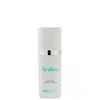What's inside
What's inside
 Key Ingredients
Key Ingredients

 Benefits
Benefits

 Concerns
Concerns

No concerns
 Ingredients Side-by-side
Ingredients Side-by-side

Water
Skin ConditioningCarbomer
Emulsion StabilisingGlycerin
HumectantPolysorbate 20
EmulsifyingSucrose Palmitate
EmollientGlyceryl Linoleate
EmollientTocopheryl Acetate
AntioxidantPhenoxyethanol
PreservativeCitrus Grandis Peel Oil
MaskingLimonene
PerfumingGlyceryl Polymethacrylate
Hydroxyethylcellulose
Emulsion StabilisingPotassium Sorbate
PreservativeButylene Glycol
HumectantPullulan
Malus Domestica Fruit Cell Culture Extract
Skin ConditioningTetrahexyldecyl Ascorbate
AntioxidantIsomalt
HumectantPropylene Glycol
HumectantCentella Asiatica Extract
CleansingMacrocystis Pyrifera Extract
Skin ConditioningDisodium EDTA
Hydrolyzed Rice Protein
Skin ConditioningImperata Cylindrica Root Extract
Skin ConditioningPvp
Emulsion StabilisingEchinacea Purpurea Extract
MoisturisingCitric Acid
BufferingXanthan Gum
EmulsifyingLeontopodium Alpinum Meristem Cell Culture
Skin ConditioningNannochloropsis Oculata Extract
HumectantSodium Hyaluronate
HumectantHydrolyzed Vegetable Protein
Skin ConditioningSodium Benzoate
MaskingSodium Lactate
BufferingLecithin
EmollientGlycine Soja Protein
EmulsifyingSodium Hydroxide
BufferingSuperoxide Dismutase
AntioxidantPEG-8
HumectantEthylhexylglycerin
Skin ConditioningCamellia Sinensis Leaf Extract
AntimicrobialHydroxypropyl Cyclodextrin
MaskingPalmitoyl Tripeptide-38
Skin ConditioningSpiraea Ulmaria Flower Extract
Skin ConditioningLeuconostoc/Radish Root Ferment Filtrate
AntimicrobialPhaseolus Radiatus Meristem Cell Culture Extract
Skin ConditioningCaprylyl Glycol
EmollientAcetyl Hexapeptide-8
HumectantArabidopsis Thaliana Extract
AntioxidantArgania Spinosa Callus Culture Extract
Skin ConditioningPlankton Extract
Skin ConditioningCitral
PerfumingSodium Dextran Sulfate
Gel FormingAcetyl Octapeptide-3
HumectantPalmitoyl Tripeptide-1
Skin ConditioningBiotin
AntiseborrhoeicWater, Carbomer, Glycerin, Polysorbate 20, Sucrose Palmitate, Glyceryl Linoleate, Tocopheryl Acetate, Phenoxyethanol, Citrus Grandis Peel Oil, Limonene, Glyceryl Polymethacrylate, Hydroxyethylcellulose, Potassium Sorbate, Butylene Glycol, Pullulan, Malus Domestica Fruit Cell Culture Extract, Tetrahexyldecyl Ascorbate, Isomalt, Propylene Glycol, Centella Asiatica Extract, Macrocystis Pyrifera Extract, Disodium EDTA, Hydrolyzed Rice Protein, Imperata Cylindrica Root Extract, Pvp, Echinacea Purpurea Extract, Citric Acid, Xanthan Gum, Leontopodium Alpinum Meristem Cell Culture, Nannochloropsis Oculata Extract, Sodium Hyaluronate, Hydrolyzed Vegetable Protein, Sodium Benzoate, Sodium Lactate, Lecithin, Glycine Soja Protein, Sodium Hydroxide, Superoxide Dismutase, PEG-8, Ethylhexylglycerin, Camellia Sinensis Leaf Extract, Hydroxypropyl Cyclodextrin, Palmitoyl Tripeptide-38, Spiraea Ulmaria Flower Extract, Leuconostoc/Radish Root Ferment Filtrate, Phaseolus Radiatus Meristem Cell Culture Extract, Caprylyl Glycol, Acetyl Hexapeptide-8, Arabidopsis Thaliana Extract, Argania Spinosa Callus Culture Extract, Plankton Extract, Citral, Sodium Dextran Sulfate, Acetyl Octapeptide-3, Palmitoyl Tripeptide-1, Biotin
Ingredients Explained
These ingredients are found in both products.
Ingredients higher up in an ingredient list are typically present in a larger amount.
Caprylyl Glycol is a humectant and emollient, meaning it attracts and preserves moisture.
It is a common ingredient in many products, especially those designed to hydrate skin. The primary benefits are retaining moisture, skin softening, and promoting a healthy skin barrier.
Though Caprylyl Glycol is an alcohol derived from fatty acids, it is not the kind that can dry out skin.
This ingredient is also used as a preservative to extend the life of products. It has slight antimicrobial properties.
Learn more about Caprylyl GlycolPhenoxyethanol is a preservative that has germicide, antimicrobial, and aromatic properties. Studies show that phenoxyethanol can prevent microbial growth. By itself, it has a scent that is similar to that of a rose.
It's often used in formulations along with Caprylyl Glycol to preserve the shelf life of products.
Sodium Hyaluronate is hyaluronic acid's salt form. It is commonly derived from the sodium salt of hyaluronic acid.
Like hyaluronic acid, it is great at holding water and acts as a humectant. This makes it a great skin hydrating ingredient.
Sodium Hyaluronate is naturally occurring in our bodies and is mostly found in eye fluid and joints.
These are some other common types of Hyaluronic Acid:
Learn more about Sodium HyaluronateWater. It's the most common cosmetic ingredient of all. You'll usually see it at the top of ingredient lists, meaning that it makes up the largest part of the product.
So why is it so popular? Water most often acts as a solvent - this means that it helps dissolve other ingredients into the formulation.
You'll also recognize water as that liquid we all need to stay alive. If you see this, drink a glass of water. Stay hydrated!
Learn more about Water